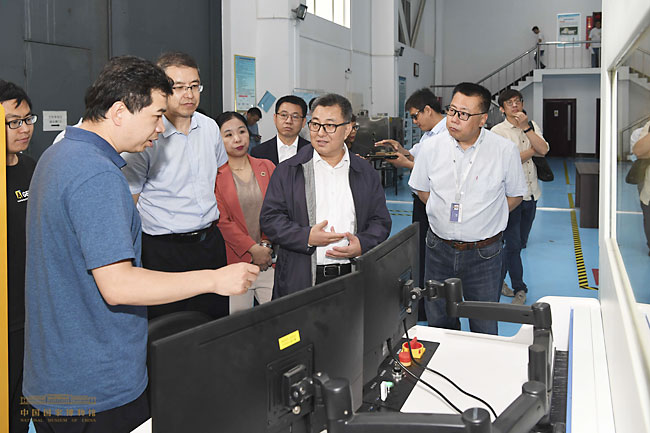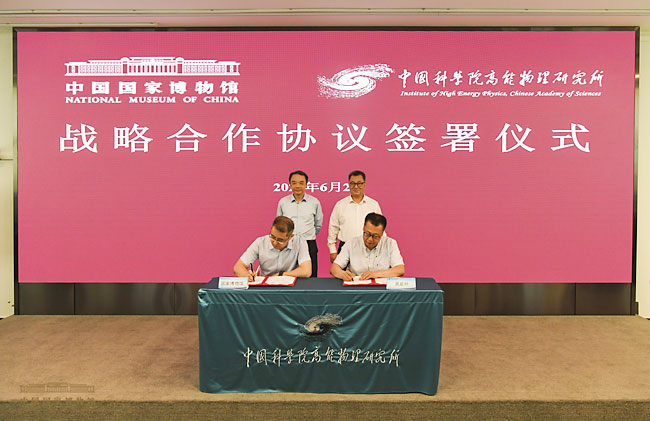
On June 2, the signing ceremony for the strategic cooperation agreement between the National Museum of China (NMC) and the Institute of High Energy Physics (IHEP) of the Chinese Academy of Sciences (CAS) was held in Beijing. The Director Wang Chunfa, the Executive Deputy Director Chen Chengjun, and the Secretary of Discipline Inspection Commission Chen Li from the NMC, and the Director Wang Yifang, the Party Secretary Wei Long, and the Deputy Director Dong Yuhui from IHEP, attended the ceremony.

Under the witness of both sides' leaders, Chen Chengjun and Wei Long signed the strategic cooperation agreement. According to the agreement, the two sides will carry out in-depth cooperation in the research, identification, protection, and collection of cultural relics following the principles of mutual complementarity, resource sharing, coordinated development and win-win cooperation.
Wang Chunfa expressed his hope that the two sides, based on prior cooperation, will take the signing of the strategic cooperation agreement as a new starting point. The two parties should henceforth strive to obtain the support of CAS and the Ministry of Culture and Tourism (MCT). Cooperation will be deepened in fields such as the non-destructive testing for cultural relics, data acquisition and processing, and the restoration and conservation of metal artifacts and paintings by fully utilizing the cutting-edge scientific and technological achievements of IHEP, which includes structural imaging, corrosion mechanism research, data processing, as well as pedigree research. In doing so, academic co-construction will be promoted to a deeper and higher level. In addition, we look forward to IHEP’s support for NMC’s continuous acquisition and preservation of the evidence that reflects China’s scientific and technological development.
Wang Yifang said that the IHEP of the CAS is a comprehensive research base for high-energy physics research, technological research, development and utilization of advanced accelerator physics, and advanced ray technology and application. It has achieved multiple important research results in the fields of particle physics experiments, particle accelerator physics and technology, synchrotron radiation technology and applications. On the basis of existing cooperation projects, the two sides should make full use of their advantages, and conduct technological cooperation and data sharing on ancient ceramics, jade, bronze, and oil painting. The signing of this strategic agreement will surely provide powerful support for broader cooperation in the future.
